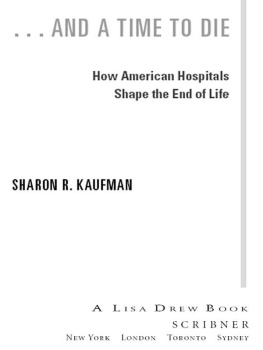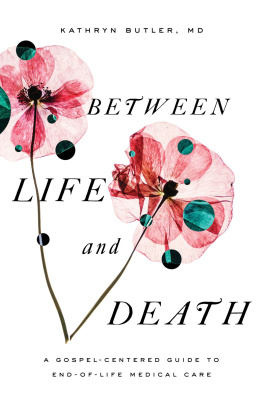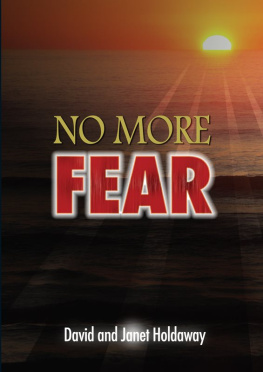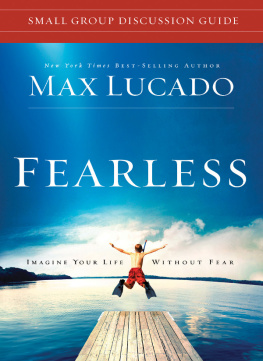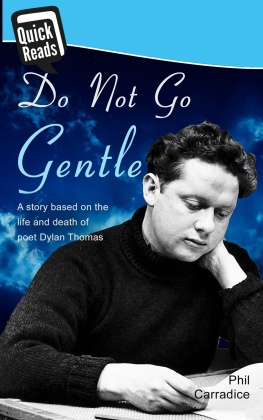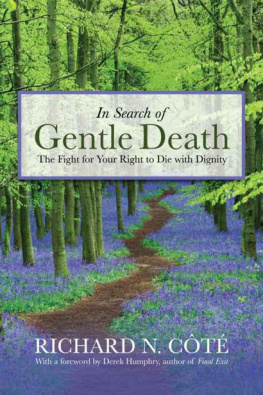SHARON R. KAUFMAN is professor of medical anthropology at the University of California, San Francisco, where she teaches students in anthropology, sociology, medicine, and nursing. Her research explores the culture of medicine and the anthropology of aging. She is the author of numerous articles, book chapters, and two previous books The Ageless Self: Sources of Meaning in Late Life and The Healers Tale: Transforming Medicine and Culture. She lives with her husband in the San Francisco Bay Area.
Acknowledgments
Two federal agencies supported this projectthe National Institute on Aging and the National Institute of Nursing Researchand my first debt is to them. The National Institute on Aging has funded my work since 1983. I received my first National Institute of Nursing Research award in 1999. I have great respect for the peer review process at these agencies, and I thank the anthropologists, sociologists, psychologists, physicians, nurses, and others who have evaluated my proposals over the years and who have spent considerable energy thinking about my research. My project officers at the National Institute on Aging have guided me well over the past twenty-two years and have offered important suggestions for conceptualizing my work. I thank Marcia Ory, in particular, for her long engagement with my work, as well as Jared Jobe and Sidney Stahl for their advice and guidance on this project. My thanks also to the National Institute of Nursing Research director Patricia Grady for her vision, commitment, and inspiration, and to her colleague June Lunney, who started the End of Life Initiative. The research for this book was funded by NIA Grant #AG13636 and NINR Grant #NR05109.
On the very day we met in 1994, Guy Micco suggested that I study hospital death. Over the years he has proven to be a stimulating interlocutor and important guide through the maze of hospital policies, federal law, medical procedures, and terminology. We talked a great deal about death, hospitals, and the role of the physician, and our conversations have helped shape this work.
This project would never have been possible without the acceptance, support, and guidance from key physicians, nurses, and administrators at the hospitals I observed. I hope my intrusive questions and presence in their daily activities were not too burdensome, and I hope they feel it was worthwhile to have an anthropologist following them around with a notebook and laptop for nearly two years. I spoke with some physicians and nurses on an almost daily basis during the years of this research and interviewed a few of them formallythey know who they areand I thank them all for their time and efforts on my behalf. I also thank the many hospital social workers and chaplains and respiratory, speech, occupational, and physical therapists whom I observed in their work with patients and families. I admire health professionals who work in hospitals today. The challenges they face are enormous, the frustrations unrelenting, and suffering surrounds them.
Many hospitalized patients, their families, and their friends consented to talk with me and I spent considerable time with some of them. The family members and friends, especially, put their fears and anxiety aside to try to articulate answers to my questions. I thank them all for speaking so candidly with an anthropologist who could offer them little except conversation.
I began writing this book in the fall of 2000 as a fellow at the Humanities Research Institute, University of California, Irvine. Ruth Malone convened the working group, Health Services and Place, and I thank her and the fellows and guestsCarolyn Cartier, Nancy Stoller, Sara Shostak, Ed Casey, and Jeff Malpasfor lively discussions and for their engagement with my project. They read my earliest chapter drafts and offered important suggestions. Director David Theo Goldberg and the entire HRI staff made my three-month stay there enjoyable and comfortable.
Valuable discussions with three nurse colleagues helped me think through transformations in nursing practice since the 1960s. Jeanne Benoliel, Patricia Benner, and Ruth Malone reflected thoughtfully on changes in hospital culture and the work of nurses, and I am most grateful to them. Thanks also to physicians Alan Coleman and Elizabeth Herskovits, who talked with me about hospitals and the way they shape doctors, the challenges of geriatrics, the pressures to treat and reasons not to, and shifts in treatments over the years. And my colleagues Doris Francis, Charlene Harrington, and Bob Brody offered crucial information about Medicare, nursing homes, patient autonomy, physician authority, and family worry and powerlessness.
Many of my colleagues at the Department of Anthropology, History and Social Medicine, the Department of Social and Behavioral Sciences, and the Institute for Health and Aging at the University of California, San Francisco, offered support, encouragement, and provocative conversation at all phases of this project. Special thanks go to Gay Becker and Philippe Bourgois for their insights and for conversations about research and anthropology. I thank the staff at the Institute for Health and Aging for their attention to grants management and for their always cheery help with proposal and report writing. Regina Gudelunas, Melinda Gorospe, and Annabel Paragas were especially helpful during the years of this project. I am also indebted to Dorothy Rice for her endless enthusiasm and wealth of knowledge about health care delivery in the United States, to Norman Fineman for helping me with information about Medicare, and to Ann Russ for her thorough research assistance and careful thinking about the project.
Kudos also to Lynn Watts for her always perfect tape transcription, Ann Magruder for assembling the bibliography, and Polly Coote for proofreading.
Readers of various manuscript drafts offered important comments and criticisms along the way. Shirley Daleski, Bill Daleski, Gelya Frank, Sandra Gilbert, Walter Kent, and Ann Russ read the earliest chapters and offered significant suggestions that I have incorporated. The students in my spring 2002 dissertation writing seminar asked to read my chapter drafts while they were working on their own, and I thank Angela Beattie, Beverly Davenport, Jennifer Fishman, Amy Gardner, Karen Greene, Fannie Norwood, Rashmi Sadana, and Lupe Salazar for their comments on what, eventually, became the first three chapters.
Vincanne Adams, Warwick Anderson, Gay Becker, Philippe Bourgois, Bob Brody, Adele Clarke, Lawrence Cohen, Alan Coleman, Bob Coote, and Guy Micco each generously read some or all of the manuscript and offered corrections and critiques that helped shape the ideas presented here. Most of all, I thank them for their friendship, interest, and good humor over the years. I admire them for their own outstanding scholarship and practice. I owe a special debt to Tom Laqueur, whose suggestions at various stages of the project helped move it forward. He, more than anyone else, advised me on the manuscript as a whole, which helped shape the books final form.
Jill Hannum entered my life when I had completed a first draft of the manuscript. Her outstanding editorial skills and gentle coaxing improved my writing. I also thank her for the title and her advice about trade publishing. I offer my unending gratitude to my agent, Liza Dawson, for her enthusiasm and work on my behalf, and to my editor at Scribner, Lisa Drew, for her belief in this book and her guidance through the world of commercial publishing. Thanks also to her capable assistants, Erin Curler and Samantha Martin.
I have often joked with friends that the daughter of a physician and a poet had no choice but to become a medical anthropologist, and certainly there is no doubt that my parents life work served as the foundation for my own commitment to undertake this research and write a book about what I found. My ongoing conversations with my father about medicine and with my mother about literature and writing seep into much of what I do. I dedicate this book to them with love.

